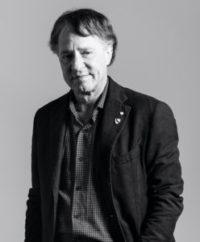
Raymond Kurzweil is an American inventor and futurist who touched the lives of many. His life’s work includes the modern synthesizer and a reading machine for the blind. Although his influence goes far beyond. He has been a pioneer in text-to-speech synthesis, synthesizers, speech recognition, and virtual reality. In addition, he is an accomplished author, writing books on artificial intelligence, trans-humanism, technological singularity, and futurism.
Early Life and First Inventions
Raymond Kurzweil was born in 1948 and grew up in Queens, NY. His mother and father were secular Jews who escaped Austria before the start of World War II. By the age of five, he was creating his own inventions using spare parts and erector sets. He knew he wanted to be an inventor, later expressing that it gave him a “magical, transcendent feeling.” Raymond’s uncle, who worked at Bell Labs, introduced him to the fundamentals of computers. Raymond loved tinkering with computers, and spent many hours on Canal Street in Manhattan. He acquired components from surplus electronics stores. At the young age of 14, he got a job programming computers for the Research Department at Head Start. Raymond wrote his first computer program at age fifteen, which was later used by researchers at IBM.
Two years later, Raymond built a computer and programmed it to recognize patterns in the music of famous composers. Raymond would play a composition, and the computer would compose the piece that he played. Raymond demonstrated this on the television show “I’ve Got a Secret”, and won first prize in the International Science Fair. Due to his success, he became one of 40 Westinghouse Science Talent finalists. He was afforded the opportunity to meet President Lyndon B. Johnson.

MIT and Kurzweil Computer Products
Raymond went on to study at MIT, and earned his B.S. in Computer Science and Literature in 1970. In his sophomore year, he started a business that used a computer program to match high school students with colleges. To do this, he created a database of 3,000 colleges, and compiled a list of two million facts about them. He had to rent time on the only computer in New England with enough memory to handle the data.
In 1974, Raymond started a company called Kurzweil Computer Products. Within two years’ time, he introduced the Kurzweil Reading Machine. This was a combination of three different inventions, including a speech to text synthesizer. This machine allowed a computer to recognize and read a variety of fonts, thus opening up the world of text to the blind, who were previously limited by what was available in Braille. Stevie Wonder purchased the first production unit, and he and Raymond began a life-long friendship.
Synthesizers and New En-devours
In the early 1980’s, synthesizers were commonly in use. However they had not taken the place of their acoustic musical counterparts because they didn’t reproduce an accurate sound. After a 1982 meeting with Stevie Wonder, who lamented the aforementioned problem, Raymond founded Kurzweil Music Systems in an effort to produce a more natural-sounding synthesizer. His success was rapid, and in 1984 he unveiled the Kurzweil K250. This was the first synth that was able to precisely imitate the sounds of numerous orchestral instruments. It was so good that, in tests with musicians, they were unable to tell the difference between the K250 and a grand piano.
In 1982, Raymond started Kurzweil Applied Intelligence, focusing on speech recognition technology. The company’s first commercially marketed system was introduced in 1987. The technology was later applied to systems that allow doctors to speak into their computers to create medical reports. Now called Clinical Reporter, it is in use in numerous medical facilities in the U.S.
In 2005, the Kurzweil-National Federation of the Blind ‘Reader‘ was introduced. It is a small, hand-held device, comprised of a digital camera and text-to-speech software. Those with impaired vision can use the digital camera to send text to the unit’s computer. Which would then read it back to them. This made letters, books, currency, and even package labels accessible to the visually impaired.

Trans-Humanism and the Future
Raymond Kurzweil is also deeply attached to his ideas about technology and how it can improve human life. He is a futurist and believes in Transhumanism, a movement that believes humans will eventually merge with technology, making them immortal. In part, his beliefs center around what he calls the Law of Accelerating Returns. The idea behind this is, within the next 30 years, we will have minuscule robots coursing through our bodies that could reverse aging and disease. This is because technology is accelerating exponentially. Furthermore, when we give up our bodies, humans will be able to think at electronic speeds.
By 2045, he believes humans will reach the Singularity, at which time we will be unable to comprehend the technology of the time. He’s so sure of this theory that he gets weekly blood tests, and takes more than 200 vitamins and supplements a day (from one of his business ventures, Ray & Terry’s Longevity Products), in an attempt to arrest the aging process. He believes he is reprogramming his body chemistry, and claims to have slowed his own aging process to a crawl. “By most measures, my biological age is about 40, and I have the same hormone and nutrient levels of a person in his 30’s,” said the then-59-year-old in a 2007 interview with Fortune Magazine.
Awards and Doctorates
Certainly, inventor and futurist Raymond Kurzweil should be regarded for his past and present works. His inventions have helped countless individuals, and have furthered the field of artificial intelligence. He holds 15 honorary doctorates, and is the recipient of numerous awards. This includes the 1999 National Medal of Technology. Which is the highest award the President of the United States can bestow upon individuals for pioneering new technologies. He has also received the 2001 Lemelson-MIT Prize for developing technologies to help the disabled and to enrich the arts.